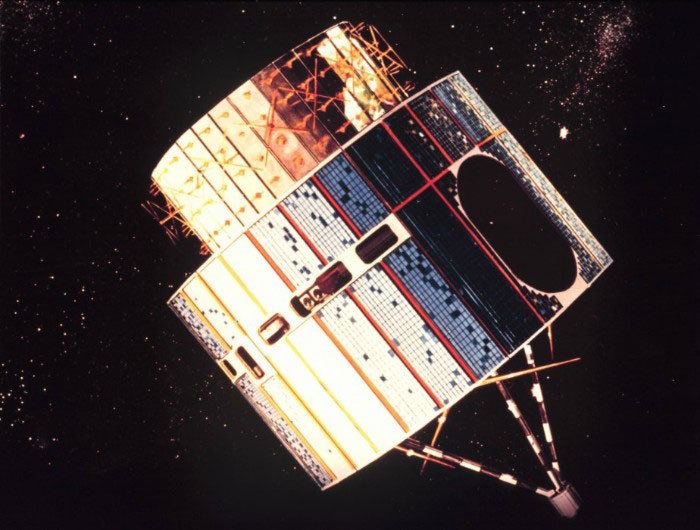COSPAR ID 1978-062A Spacecraft type SMS Inclination 14.3° Period 24 hours Launch date 16 June 1978 | Operator NOAA Mission duration 35+ years Inclination 14.3° Launch mass 627 kg Rocket Delta 2000 | |
 | ||
Similar GOES 2, GOES 1, GOES 5, GOES 4, GOES 7 | ||
GOES 3, known as GOES-C before becoming operational, is an American geostationary weather and communications satellite. It was originally built for the National Oceanic and Atmospheric Administration as part of the Geostationary Operational Environmental Satellite system, and was launched in June 1978. It is positioned in geostationary orbit, from where it was initially used for weather forecasting in the United States. Since ceasing to function as a weather satellite in 1989, it has been used as a communications satellite, and has spent over thirty-eight years in operation. GOES 3 was decommissioned 29 June 2016 at the CSTARS facility in Miami, Florida.
Contents
GOES 3 was built by Ford Aerospace, and is based on the satellite bus developed for the SMS programme. At launch it had a mass of 627 kilograms (1,382 lb).
Launch
GOES-C was launched using a Delta 2914 carrier rocket flying from Launch Complex 17B at the Cape Canaveral Air Force Station. The launch occurred at 10:49 GMT on 16 June 1978, just two minutes short of a year after the previous satellite, GOES 2.
Orbit
The launch successfully placed GOES-C into a geosynchronous transfer orbit, from which it raised itself to geostationary orbit using an onboard SVM-5 apogee motor. Its insertion into geosynchronous orbit occurred at 03:22 on 17 June.
GOES-C underwent on-orbit testing, and was subsequently redesignated GOES 3. It replaced GOES 1 in service, and was initially operated at 135° West. In 1981, it was moved to 90° West, arriving in 1982, before departing again in 1984. In 1985 it arrived back at 135° West. In 1987 it was moved to 129° West, where it operated until it became unusable for meteorological studies in 1989.
After ceasing operations as a weather satellite, GOES 3 was reassigned for use as a communications satellite. In 1990, it was relocated to 175° West, and in 1995 it was moved again, and has been stationed between 102° and 110° West since 1996. Organisations which have used GOES 3 for communications include Peacesat, who used it to provide communications services to islands in the Pacific Ocean; the University of Hawaii who used it to broadcast educational programmes; the US National Science Foundation, who use it for communications with the Amundsen-Scott South Pole Station; and the Rosenstiel School of Marine and Atmospheric Science.
